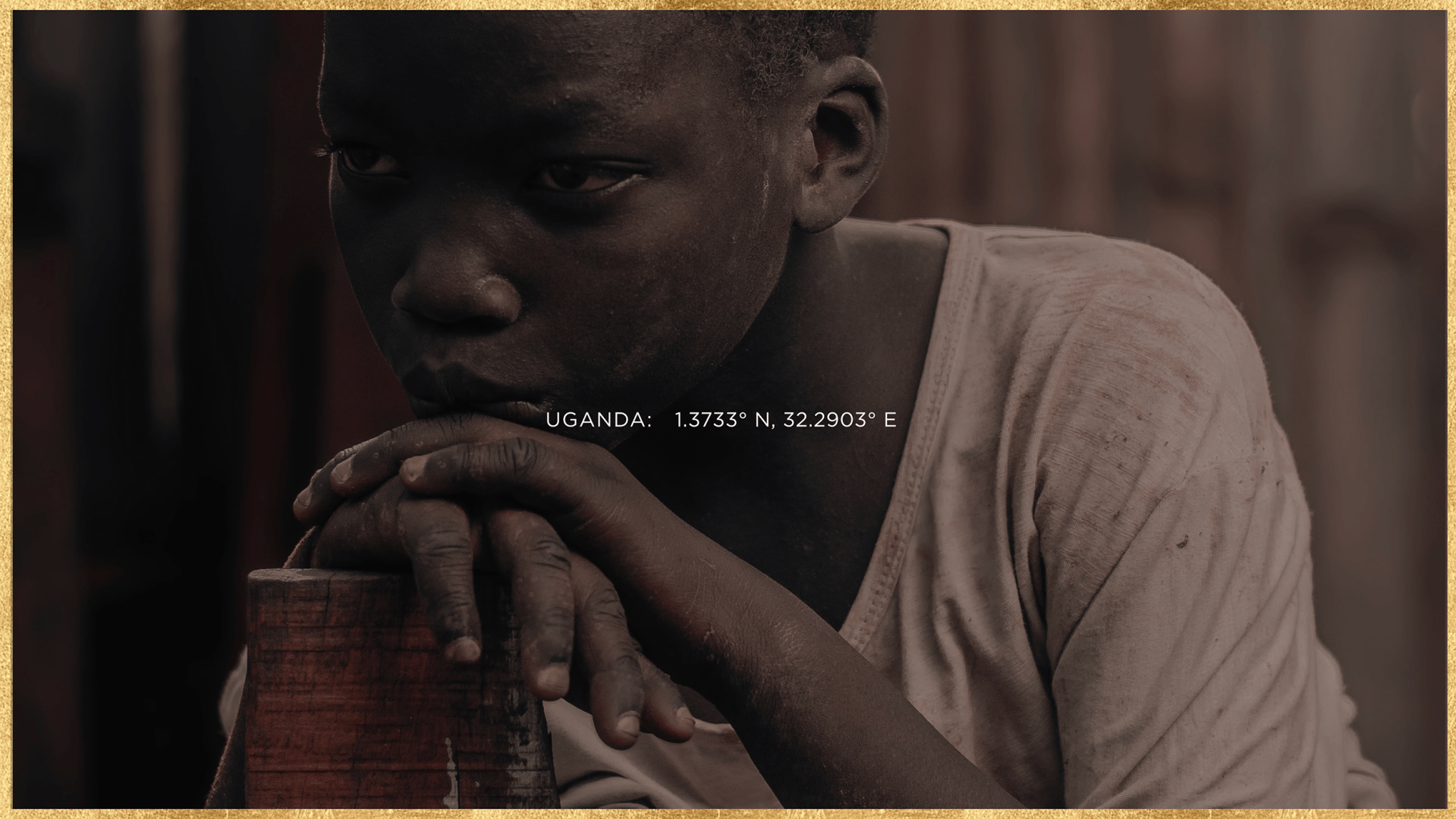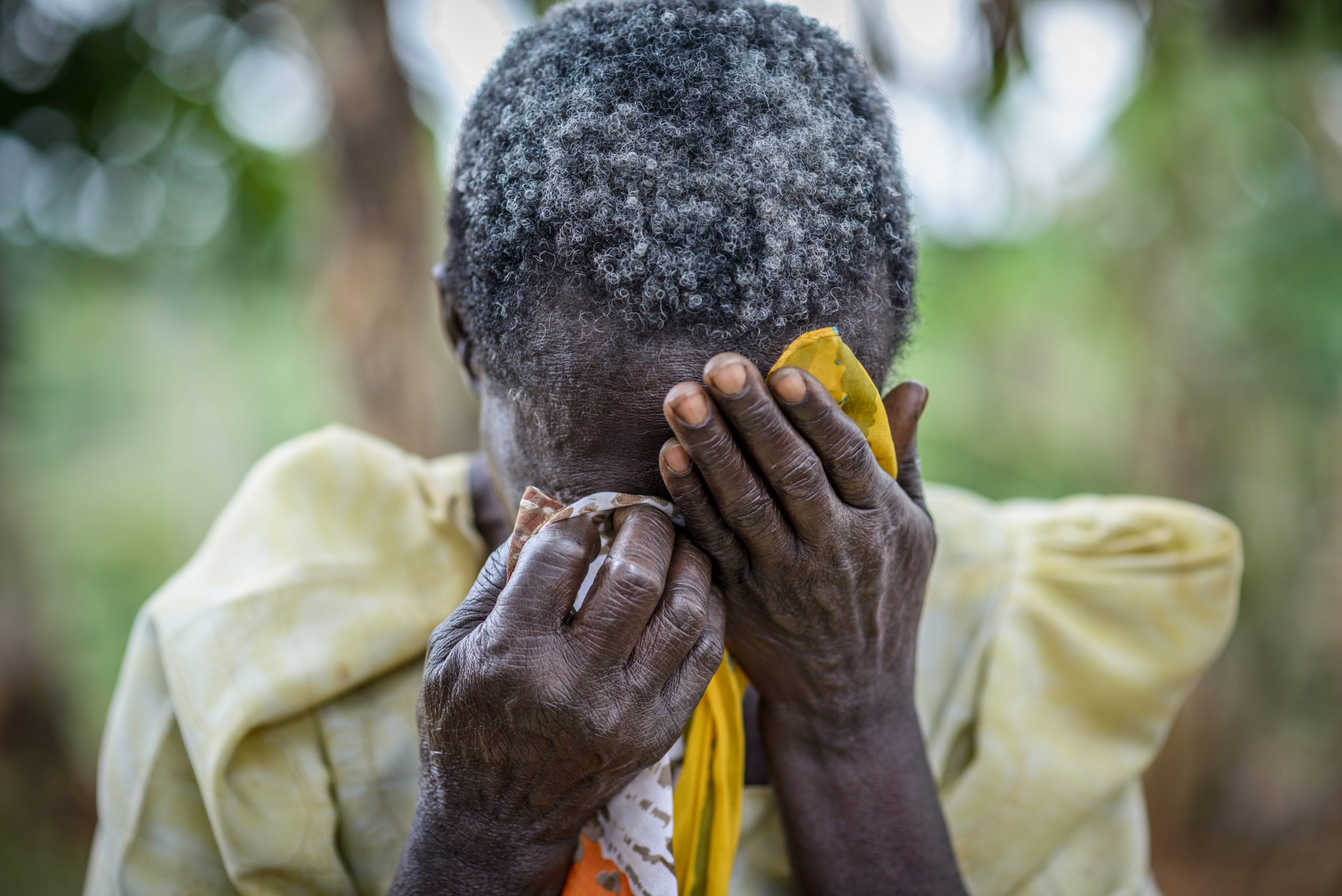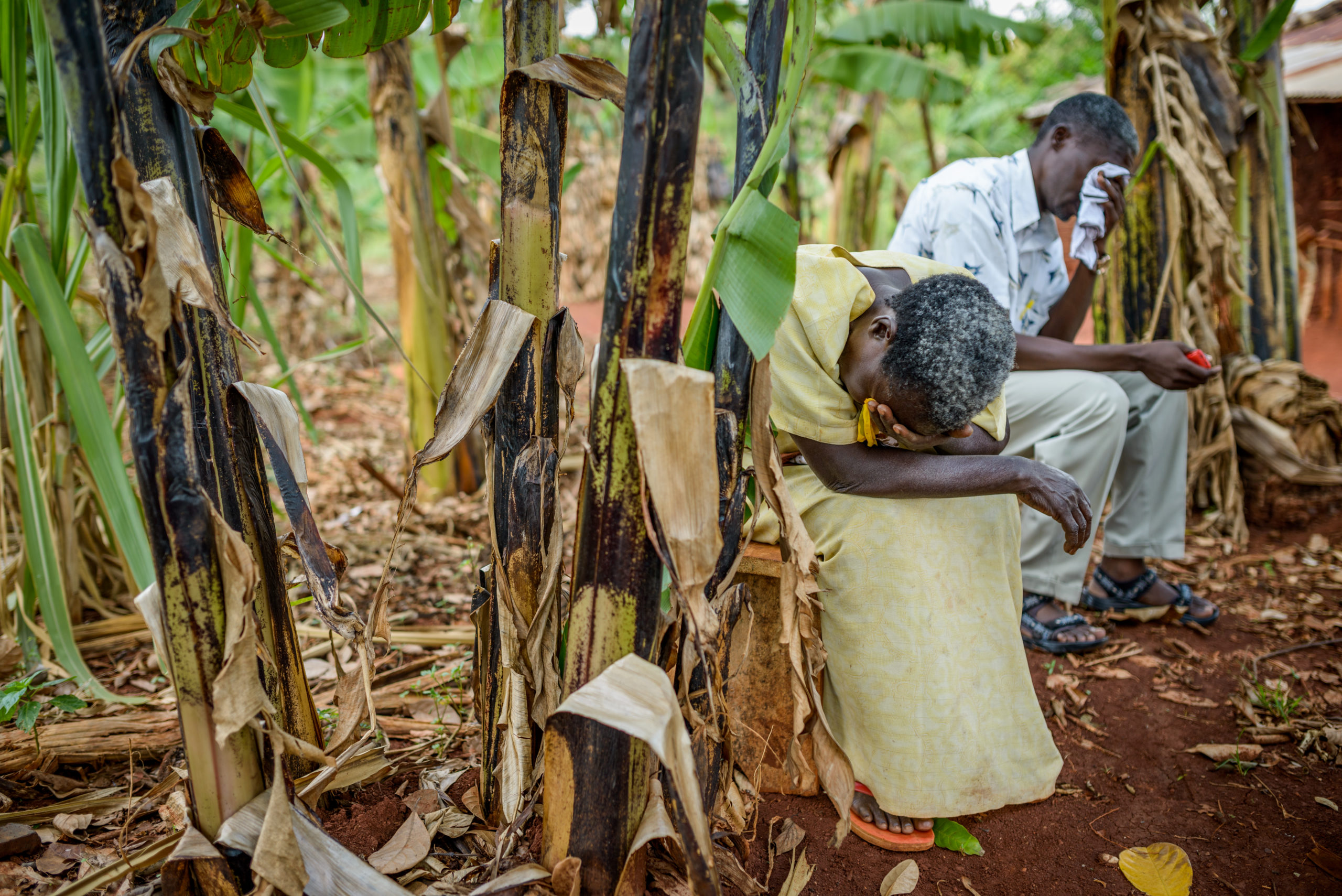This story contains content that some may find disturbing
The boys were quick, but the witch doctor was quicker.
Moses and Kato lived in Uganda’s Buikwe district, east of the capital city of Kampala. Kato was the younger of the two, a mere ten years old when he disappeared. He loved singing and racing along the dirt roads pushing an old tire with a stick.
One afternoon he went with his cousin to buy soap from the trading center. It was New Year’s Eve of 2013. The last time anyone saw him, he was with his uncle.
Children found his body the next day, five minutes from his home. The area smelled of death. A dog carcass rotted nearby among the bushes. The ground was covered with scrubby grass, putrid yellow fruit, and dried blood. “They chopped him here,” says his grandfather, Farouk. “They put down a log and used a panga (a machete) to chop off his head.”
Kato’s heart and two fingers were taken. Suspicion fell on the uncle Amim Panda, who was burned to death by an angry mob.
The world, says Farouk, lost a great light. “I knew his talents,” he says.
It was around the same time that Moses lost his life. Fifteen years old, he was a school prefect who loved soccer. His 30-year-old mother, Rehema, exhausted from having another baby, sent Moses to buy potatoes. It was the last time she would see him alive. When the boy did not return, his father went to look for him. The family searched throughout the weekend.
“On Monday, he was nowhere to be seen,” says Rehema. On Tuesday, someone located his shoes. Then Rehema overheard a terrible conversation about a child being found. “I started shaking,” she says. “I was bedridden. I was shivering. I didn’t believe it was true.”
When Moses’ body was found in a sugarcane field, it had been horribly mutilated. The family buried what was left of the body in the family plot.
“After the burial, people said my husband killed Moses,” says Rehema. “They arrested him.” They also arrested another relative staying in the home with the family. With no evidence against them, the two were released.
Jon Warren | World Vision
The Buikwe district is the heart of witchcraft in Uganda. All along its dirt roads, the practice is in plain sight. Inside the doorways of thatched-roofed shrines hang the tools of the trade: animal carcasses, shells from nearby Lake Victoria, and doves cooing softly in their cages.
Obed Byamugisha works in child protection with World Vision. The witchcraft is not new, he says, but something has changed. “Witchcraft has been there, but child sacrifice is new.” Obed has made it his mission to prevent this evil as often as he can.
Child sacrifice begins with the mutilation of the individual—intending to use their blood or body parts for ritual purposes. Though the horrendous acts are carried out while the child is still alive, very few survive the mutilation. Recent studies come to the same conclusion that child sacrifice, while present in local mythologies, was not a common occurrence until recently. It’s been reported also in Tanzania, Nigeria, Eswatini, Liberia, Botswana, South Africa, Namibia, Kenya, and Zimbabwe. But in Uganda, the problem is particularly severe. Statistics are hard to find, but research conducted in 25 Ugandan communities by Humane Africa in 2013 suggested that one child is sacrificed each week in those communities alone. A 2014 KidsRights study report suggests that, given poor record keeping, these figures may be just the tip of the iceberg, and “the real scope of the spread of child sacrifice is not yet visible.”
The question is why.
Heather Houseal is a Florida attorney who has worked alongside Kyampisi Childcare Ministries, a Christian community development organization in Kampala, to track down cases that were dismissed or thrown out.
“Uganda is a wonderful place, filled with beautiful and kind people,” Heather says. “But like any other place in the world, Satan uses evil to influence people and circumstances.”
She says poverty precipitates child sacrifice, turning children into a commodity. “Witch doctors charge hundreds of dollars for a child sacrifice. They convince uneducated, poor people that the only way to ensure they get the results they’re looking for is to sacrifice the most pure and potent subject, a child.”
Heather investigated reports of men who kidnapped children to sell to witch doctors. The kidnappers found the gruesome act addictive. “They felt like evil had overtaken them and they wished they could get out, but they just could not stop.”
Law enforcement often fails to stop child sacrifice, and police say they don’t have enough fuel to reach the locations where child sacrifice has been reported.

“Reporting mechanisms and record keeping are not superb,” says Heather. “Everything is done on paper. Cases get lost. Families give up on a system that is failing them. Or they become too frightened to testify in the face of such evil.”
Among the people of Uganda, the terms “witch doctor” and “traditional healer” are often used interchangeably. But there is a difference: some witch doctors kill children.
Mukasa David Sayansi and Edwin Kibogo identify themselves as traditional healers, explaining that sacrificing birds, goats, and sheep is normal in the Buikwe district. In the middle of their shrine is a tall wooden pole wrapped in goatskins and bark cloth. Bird nests and a dried pangolin hang from the pole. The interior smells of tobacco and cowhide. Outside the hut are cages filled with doves. Mukasa explains, “We suck the blood out of the doves and sprinkle it over the sick.”
Mukasa and Edwin say witch doctors who kill give all traditional healers a bad name.
“The bad ones,” Mukasa says, “sacrifice children, rape women, and tell lies.” There is a belief in Uganda and the surrounding countries that child sacrifice makes traditional medicine stronger. He says there are two kinds of child sacrifice. The first is for money.
“The witch doctors who put children under buildings get paid a lot—$25,000,” says Mukasa. Those witch doctors take the heads, hearts, and extremities of children and encase them in the foundations of new businesses to ensure they are successful. They sprinkle the blood of children into fishing boats along the shores of Lake Victoria to guarantee larger catches. The Minister of State for Planning in Uganda, Hon. David Bahati, says that it is disheartening to note that human traffickers in Uganda earn over $30 billion USD per year in trading children and their body parts. “It is abhorrent to hear that someone will make the sacrifice of a child’s life to construct a building so that it can generate a lot of wealth for them,” Bahati says.

The second kind of child sacrifice is used to break a relationship when the witch doctor has exhausted every other way of trying to heal an illness. Instead of admitting failure, witch doctors ask for something they hope will be impossible: the sacrifice of a child. “After eating a patient’s money,” says Mukasa, “they give excuses.”
Edwin says they ask the sick person to do something unthinkable, such as to bring them the head of a child. “They use it to cut the relationship.”

To stop the carnage in the Buikwe district, Obed and his team devised a sort of “Amber Alert” system adapted to its context. “We use drums when a child is stolen,” he says. Motorbike drivers quickly block the main roads as the drumbeats are amplified by loudspeakers. “It causes a chain reaction in the community. When you hear the drum, you know there’s danger and you immediately rise to search for the child.”
The system links up faith leaders, the media, response agencies, and the justice system to battle child sacrifice together. It also involves the traditional healers who abhor the practice. In 2012, the districts began to register traditional healers as part of an association to weed out the bad ones. So far 547 have been registered. Otherwise, says Mukasa, “we all carry the same blame.”
Obed’s Amber Alert system has been a success in the district. To date, he says, it has saved 37 children—and even more where it has been implemented in other communities.
One of those children is Sharon. It was her brother who saved her. At the time, Sharon was three and David was seven. Their father was a fisherman, and their mother often left the children alone while she worked in other people’s gardens.
David and Sharon were brushing their teeth under a coffee plant in the front yard when strangers approached. “Two men came here and started calling us,” says David. “I told Sharon to run. I ran.”
But Sharon could not escape. The men captured her and pressed chloroform to her face to silence her cries.
David ran until he found a neighbor with a cell phone, who called others, and soon the alarm rang out over the area. Motorcycles blocked the highways. The abductors heard the alert and let Sharon go. Her life had been spared because of the work of Obed.
As Obed worked tirelessly in Buikwe, World Vision and other nongovernmental organizations pressured lawmakers to enact legislation to protect children.
Finally, in May 2021, the Ugandan parliament passed a law criminalizing child sacrifice. The penalty: life in prison. Watching the proceedings unfold live on TV, Obed screamed with joy.
A few minutes later, he says, “tears started rolling because I immediately remembered all the men and women I promised that this law would be enacted.” Men like Kato’s grandfather, permanently hunched with grief. Women like Moses’ mother, her brown eyes forever flooded in pain. “These men and women lost their children to child sacrifice,” he says, “and most of them died waiting for the law to be enacted.”
For Obed, this victory is bittersweet. He hopes the new law will save many lives, but the cost has been great. “I carry with me painful scars for the lives of children lost,” he says. “I have their photos. I see them daily. But our goal is what makes us do the work.”
The goal of delivering children from evil. For the kingdom of heaven belongs to such as these.














